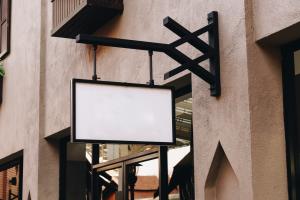
Strategic Signage Design Plays a Measurable Role in Business Visibility and Revenue, Says Louisiana Sign Expert
“Signage functions as the first point of contact for many businesses,” said Gaunt. “A well-designed sign not only attracts attention but also conveys credibility, consistency, and clarity, which contribute to customer decision-making before entering a business.”
Visibility and Location-Based Marketing
High-traffic commercial areas often rely on impulse traffic to drive business. In these scenarios, exterior signage operates as a passive marketing tool, pulling customers from the street and directing them toward a service or product they may not have actively been seeking.
Visibility is one of the most critical aspects of effective signage. Font size, contrast, lighting, and placement all determine how well a sign performs. Businesses located near highways, intersections, or in crowded plazas benefit from signs that are legible from a distance, unobstructed by surrounding structures or foliage, and properly illuminated for evening visibility.
Branding Through Design Elements
Consistent branding across physical and digital spaces builds recognition and trust. A sign that reflects brand colors, fonts, and tone contributes to a cohesive identity. For small businesses and new ventures, signage often serves as the foundational branding element that customers associate with the experience inside.
Design elements such as logos, spacing, proportions, and materials all influence perception. Bold fonts suggest strength or reliability, while script fonts may suggest elegance or tradition. Color selection plays a psychological role—reds often signal urgency or energy, blues can convey professionalism or calm, and greens are often associated with wellness or nature.
A well-executed sign reflects the tone of the business and aligns with the services or products offered. Inconsistent or unclear signage can create confusion or suggest disorganization, leading potential customers to pass by without entering.
Directional and Interior Signage
In addition to exterior signs, directional and interior signage guides customers through their journey once they’ve entered the business. These signs reduce friction by identifying restrooms, exits, departments, or featured products. Well-placed interior signs can also increase dwell time and expose customers to additional offerings.
Wayfinding design matters as much as visibility. Signs that blend into the environment may be missed entirely, while signs that overwhelm the visual space can become noise. Balance, hierarchy, and positioning ensure that signs do their job without disrupting the flow of the space.
Digital and Changeable Signage
In many sectors, especially retail and food service, digital signage provides flexibility to update messages, pricing, or promotions in real time. Digital signs can display rotating content, support seasonal branding, and highlight time-sensitive campaigns.
When used effectively, digital signage improves customer communication while reducing dependency on printed materials. It also offers the potential to display animated logos or interactive content, engaging passersby with dynamic visuals. However, digital signage still requires thoughtful design and brightness calibration to be effective under varied lighting conditions.
Compliance and Local Code Considerations
Business signs must also adhere to zoning laws and municipal codes regarding size, height, illumination, and placement. In some areas, specific districts may restrict flashing lights, certain color combinations, or oversized signs. Working with experienced sign professionals ensures that compliance is built into the design from the start.
Failure to meet code can result in costly removals, fines, or forced redesigns. Permitting processes and engineering requirements should be considered during the planning phase of any commercial signage project.
Return on Investment
While signage requires an upfront investment, it continues to deliver returns over time without ongoing advertising costs. A permanent sign is always on, always visible, and never requires monthly placement fees. For many brick-and-mortar businesses, effective signage represents one of the most efficient forms of local advertising.
Studies from the Sign Research Foundation and Small Business Administration have indicated that the presence of a new or updated sign can lead to a measurable increase in foot traffic, customer retention, and average transaction size. These metrics underline signage’s role in not just attracting but converting attention into sales.
Morgan Thomas
Rhino Digital, LLC
+1 504-875-5036
email us here
Visit us on social media:
Facebook
Distribution channels: Building & Construction Industry, Business & Economy, Culture, Society & Lifestyle, Real Estate & Property Management
Legal Disclaimer:
EIN Presswire provides this news content "as is" without warranty of any kind. We do not accept any responsibility or liability for the accuracy, content, images, videos, licenses, completeness, legality, or reliability of the information contained in this article. If you have any complaints or copyright issues related to this article, kindly contact the author above.
Submit your press release

